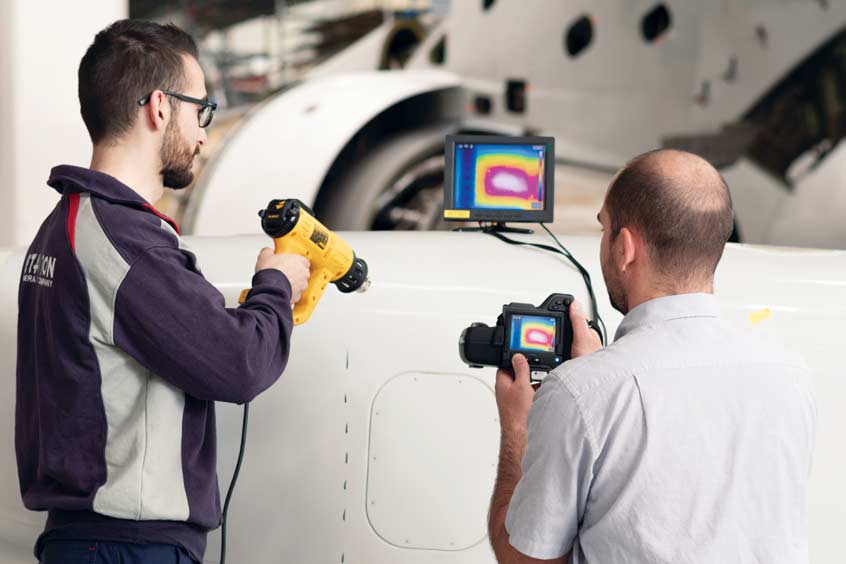ACE 2026 - The home of global charter.
 The bimonthly news publication for aviation professionals.
The bimonthly news publication for aviation professionals.

Jet Aviation has received approval from the Swiss Federal Office of Civil Aviation (FOCA) to use infrared thermography for non-destructive testing (NDT) in its Basel maintenance facility. This is the company's sixth NDT technique approved in Basel. The Basel NDT shop was established in 1991 and further supports liquid penetrant, X-ray, magnetic particle, eddy current and ultrasonic testing.
Used to detect heat or thermal energy from an object, infrared thermography is a highly sensitive and reliable method of non-destructive testing that converts heat energy to a temperature, which can then be depicted as an image of temperature distribution. It is the same technology used in night vision goggles and is also employed in medical science to detect irregularities such as cancer and chronic disease. In aviation, it is typically applied to the airframe and components to test structural integrity.
“We have been inspecting aircraft components and structures with NDT techniques for 30 years in Basel and are delighted to expand our service capabilities with this approval for infrared thermography,” says Frédéric Westpalm van Hoorn, senior manager of Basel's NDT and components shops. “Like all NDT techniques, infrared thermography provides a non-invasive means of detecting problems before they escalate and potentially cause catastrophic results. For example, it can detect water collecting in the elevators or rudder, which could then be addressed to prevent the in-flight freezing and expansion that might lead to ruptures.”
Typically performed during scheduled maintenance, infrared thermography is used to detect delamination, defective bonding and water ingress, as well as corrosion and material thinning. It is particularly well-suited for the inspection of composite materials.
Cyril Martiniere, VP of MRO services Europe and GM Basel, adds: “Jet Aviation is committed to innovation, quality and service excellence. Infrared thermography is just one more way our teams of professionals enable global flight, with passion.”